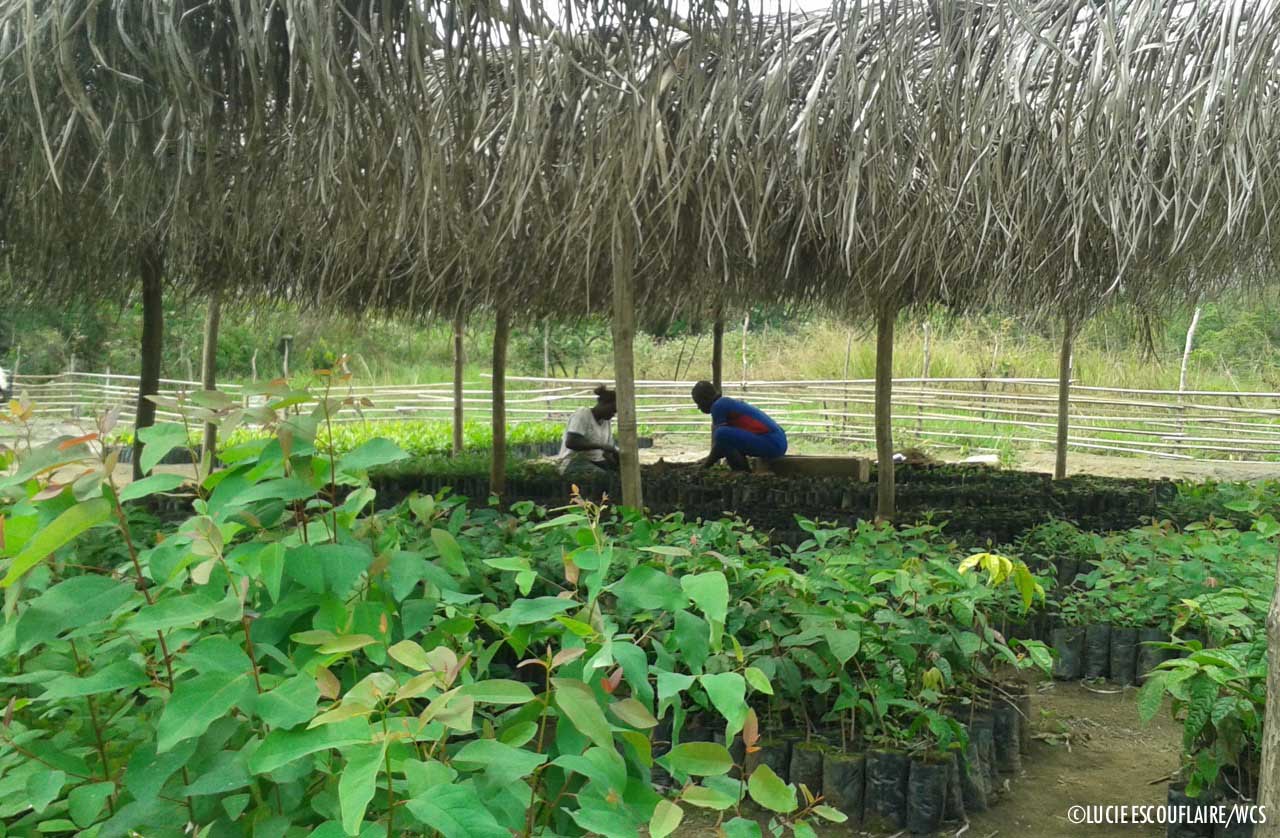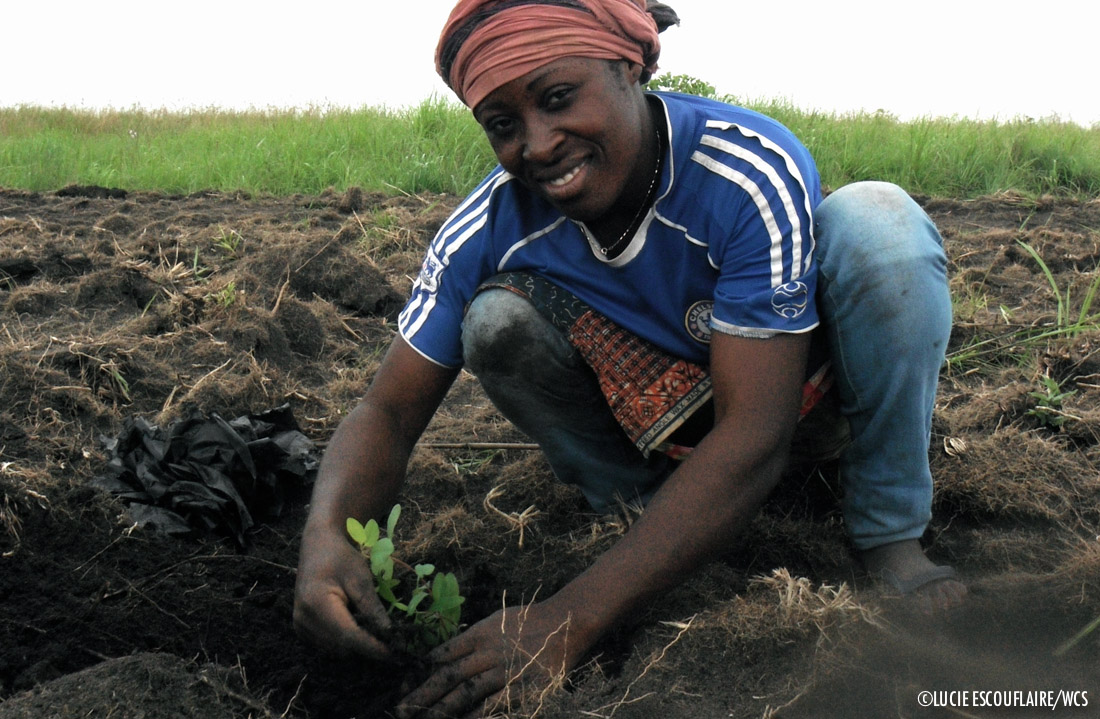
Sustainable agroforestry
Nested in the Batéké Plateau of Southern Congo, the Lefini Wildlife Reserve is surrounded by villages and agricultural land. The reserve is under pressure from unsustainable hunting and demand for fuel wood yet remains a key potential tourism site for the country. On the northern border of the reserve, people living in a small village called Mpoh, well aware of the importance of conservation for their future, decided to act to preserve their native land by creating the association “Friends of the Augmentin without prescription”. Maximin, president of the association, knows that among the many challenges of village life, a major issue women face is the collection of firewood for preparing daily meals. As villagers are not permitted to clear fields in the forest within the reserve, women have to cover long distances to find wood elsewhere. This results in women leaving children home alone, and reduces time spent growing food for their families.
”The biggest challenge is to keep people motivated even if the benefits will only be seen in four years time.
As a solution, the association’s thirty members decided to establish a community tree plantation that could provide wood close to the village. Getting started though in a country without local expertise is the difficult part. Helped by the Wildlife Conservation Society, who through USAID provided initial financing for seedlings, tools and technical support, the members of the association planted three hectares and want to expand to ten in 2017.

The plantations, which include both fast-growing timber trees and fruit trees, incorporate peanuts and cassava. According to Maximin, “one of the biggest challenges is to keep the people motivated even if the wood can only be cut in four years” he says. Thus, planting trees and crops into an agro-forestry system is beneficial because this can help women maximize profits and provide sustenance for their families. Peanuts generate a small income after 4 months, and the cassava can be harvested after 1 year. Then, once the trees have reached maturity non-timber forest products such as wild edible leaves (Gnetum africanum) and plants used in packaging (Marantaceae) can be grown under the forest canopy. Firewood can be harvested after 4-5 years and fruit trees such as avocado and oranges will yield results after 8 years.
”Benefits are shared into three parts, 70% for the members, 20% for the association saving fund and 10% for the village development committee.
Odette, Maximin’s wife, is also part of the association. Like other village women, she collects firewood every day to cook for her family. For her, this plantation near her house will be a huge help when the trees will be ready to harvest and sold around the community. “Benefits are shared into three parts, 70% for the members, 20% for the association saving fund and 10% for the village development committee”. It might be not much at the moment, but the members know this is just the project’s beginning, and intend to stay invested until the trees are sold.


Stephen Barth
Love learning about these kinds of solutions, especially grassroots upward